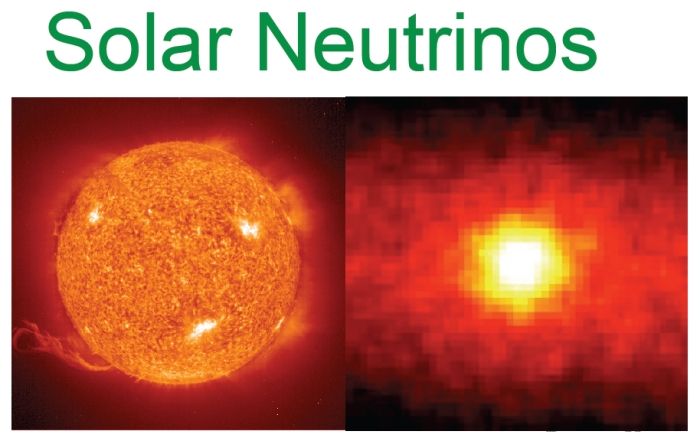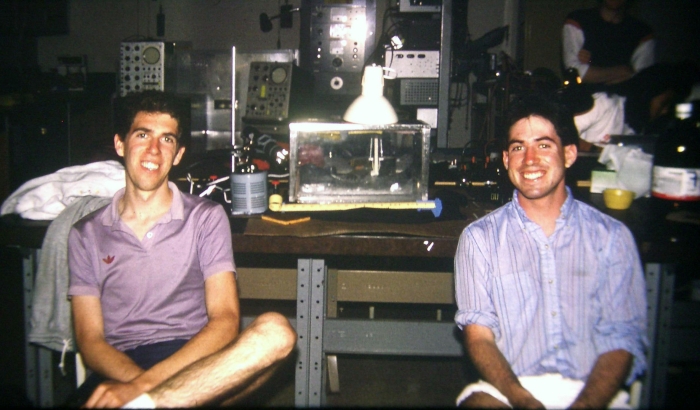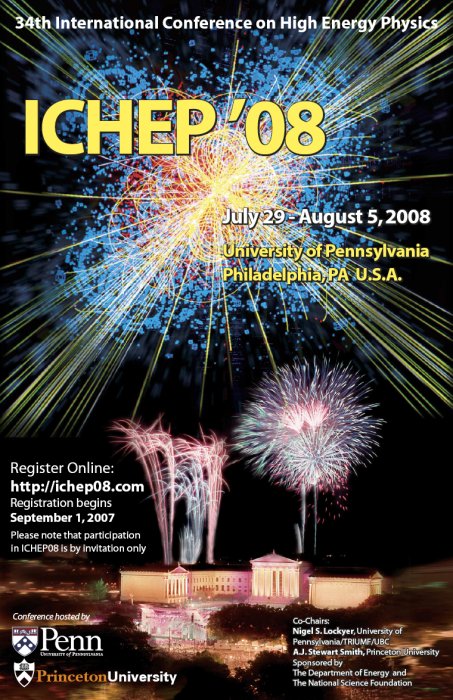Director's Corner
4 September 2008
 Barry Barish |
High Energy Physics in Philadelphia — ICHEP 08
There are many conferences in high-energy physics, maybe too many! The International Conference on High Energy Physics (ICHEP) however, once affectionately called the Rochester Conference, is considered central in our field. It takes place every second year. This year the meeting was held at the University of Pennsylvania in Philadelphia. First and foremost, I want to note that the ILC was very well represented with an excellent talk by Nobu Toge from KEK. Nobu covered the ILC from the standpoints of the physics, the accelerator and the detectors.
The ICHEP conference covered essentially all of high-energy physics. There were three days of parallel sessions (including a poster session), followed by three days of plenary talks. I can hardly review such a sweeping agenda in this short column, so I will just selectively comment on a few things that were of special interest to me.
The timing of ICHEP 08 was notable as it happened just weeks before the first beams are scheduled to be circulated into the LHC rings at CERN. All of us in high-energy physics are eagerly anticipating the start-up of the LHC as the birth of a new era in particle physics. The detectors are in place and have been recording cosmic rays and analysing simulated data for months. CERN has already injected test beams into the ring, with the next step being to circulate the beam. Then, hopefully, they will achieve and record the first set of collisions this autumn. ICHEP was very fortunate to have Lyn Evans, LHC Project Leader, as lead plenary speaker. He presented the status and plans for the LHC machine start-up. In his talk he announced that the whole machine is now cold and proceeded to outline the systematic steps in commissioning over the coming weeks, months and beyond.
 An image of the sun in visible light and with solar neutrinos An image of the sun in visible light and with solar neutrinos |
 Chris Walter and Ken Barish as undergraduates Chris Walter and Ken Barish as undergraduates |
A second plenary talk that I would like to mention was given by my former thesis student at Caltech, Chris Walter of Duke University. His talk on "Experimental Neutrino Physics" was a very coherent presentation on a difficult and varied subject. Chris covered the major accomplishments of the last decade in neutrino physics, including the solution to the solar neutrino problem and the start of precision neutrino measurements, and then previewed what could be an equally exciting next decade. In his words, “we will measure the remaining mixing angle, learn the nature and absolute mass of the neutrino along with the mass pattern.”
I couldn't help but feel very proud of Chris, not only having seen him develop while a graduate student at Caltech and beyond, but actually having known him in a different context even earlier when he and my son Ken were undergraduate roommates at the University of California, Santa Cruz. Ken has also become a physics professor at UC Riverside and the attached photo shows the two of them performing a muon lifetime ray experiment as undergrads.
Perhaps the talk that most epitomised the richness of our field was given by Graciela Gelmini of UCLA on "The Search for Dark Matter." As we are all aware, we do not know what makes up dark matter, making its discovery one of the biggest and most fundamental challenges to both particle physics and astrophysics. Graciela took a very positive approach to the subject. Her first slide said “We know a lot! We know that dark matter exists; we know its abundance in the universe to a percent level; we know most of it is not MACHOS; we know most of it is not baryonic; and we know it is not explained by the Standard Model.” She went on to give a comprehensive review of both the physics alternatives and considerations, and she covered the wide -ranging experimental programme that will yield information on dark matter and hopefully the discovery and understanding.
My last comment is on the report by Gregor Herten, chair of the International Union of Pure and Applied Physics' (IUPAP) Commission C-11 (Particles and Fields). I am a previous chair of C-11 and know the important role it plays in bringing together our field internationally. Traditionally, C-11 and IUPAP have sponsored one meeting a year, alternately the Lepton-Photon Conference which is all plenary, and the ICHEP Conference which covers the entire field with both parallel and plenary sessions. Gregor announced that the Lepton-Photon meeting next year will be held in Hamburg from 17 to 22 August. (This will be followed by ICHEP-2010 Paris, LP-2011 Mumbai and ICHEP-12 in Melbourne.) He also announced that C-11 and IUPAP will sponsor a new conference on instrumentation in high-energy physics, pointing out that we lack an internationally sponsored meeting on this crucial part of our field. The first such conference to be called TIPP will be held at KEK in Japan from 12 to 17 March 2009.
Interestingly, Gregor also discussed two other activities of C-11, the awarding of a "Young Scientist Prize" and a working group that is assessing recognition of individual achievements in large collaborations. Clearly prizes are an important recognition, and two such prizes were awarded at ICHEP - one in experimental particle physics to Kai-Feng Chen, Taipei, and one for theoretical particle physics to Yasaman Farzan, Tehran. The C-11 working group is addressing other ways to get more recognition for outstanding young scientists working in large collaborations. We all know the incredible young talent in our field attracted by the science and the obligation we have to enable them to receive the recognition they deserve and that will further their careers. I applaud C-11 for recognising this issue and taking it on!
-- Barry Barish

